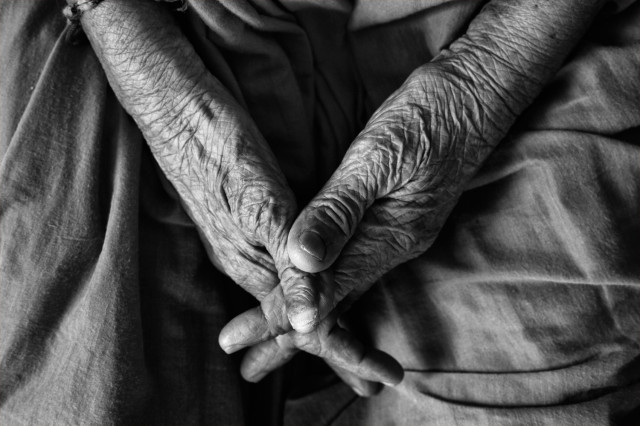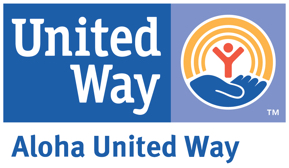
Article courtesy of Honolulu Civil Beat
Throughout the coming year, Civil Beat will be examining the challenges facing Hawaii’s disappearing middle class, including the political barriers that have long stymied improvement.
In the next decade or so, economists predict Hawaii will face a significant social and economic crisis, as the number of older retirees balloons and there aren’t enough working people paying taxes needed to support kupuna.
Federal programs like Social Security and Medicare will be stretched to their limits. Personal savings for retirement – for those fortunate enough to have pensions or to have built equity in their homes – will be starting to run thin. And, compared with other states, Hawaii will have an unusually high number of people living past 85.
“Aging in the U.S. is going to bring a great deal of pressure to the systems of support, and that’s going to rebound to Hawaii,” says Andrew Mason, a professor emeritus of economics at the University of Hawaii who has extensively studied the state’s demographics.
So how big will the gap be between federal aid and personal savings and what people need to live? By 2035, Mason predicts a $7 billion hole.
“It’s going to be very hard,” says Mason, who with co-author Michael Abrigo outlined Hawaii’s impending crisis in a paper titled “Hawaii’s Generational Economy.”
Hawaii’s impending kupuna crisis underscores a point often lost amid discussions about Hawaii’s economically vulnerable people: the challenges affect everyone — not just those most acutely at risk, like people in poverty, without homes and the working poor.
Hawaii is hardly the only state with an aging population – Baby Boomers are getting older everywhere – but the Aloha State has special challenges: chiefly a high cost of living that stresses families, makes it impossible for many to save and forces people to leave.
Hawaii’s numbers are stark. The state’s high cost of living and relatively low-paying jobs means about one-third of families are living paycheck to paycheck and saving little or nothing for the future. These families are referred to as “asset limited, income constrained, employed,” or ALICE.
And another 9% are below the poverty level, according to the latest ALICE data from the Aloha United Way. That means 42% of residents are at the ALICE level or below, which places Hawaii 19th from the bottom among the 50 states and Washington, D.C., in the ALICE rankings.
Economists and others are keeping a wary eye on the situation and predict things are only going to get worse as the full effects of a worsening economy become clear. Federal bailout money has been propping people up, but Covid-relief aid like child tax credits and extra unemployment payments are coming to an end.
Some experts predict studies this year will show as many as 60% of Hawaii residents will be considered ALICE.
Things could be even worse if it weren’t for Hawaii’s spirits of aloha and ohana. According to another recent study by the national nonprofit Financial Health Network, about half the people in Hawaii — 47% according to a survey – survive by depending on friends and family for financial support. In addition, even before the pandemic, most people in Hawaii routinely tapped into their savings to get by — 73% in Hawaii versus 20% nationally.
“People are getting by paycheck to paycheck, and there isn’t much left at the end of the month for anything,” says Carl Bonham, executive director of the University of Hawaii Economic Research Organization. “And that goes way up into the middle class, and a big chunk of that goes toward housing.”
Honolulu Home Ownership Rate Is Among The Nation’s Lowest
Hawaii’s high housing costs have consequences beyond the short term. According to Mason, retired people generally get about half of their support from what economists call transfer payments, including federal government support and money from family. The other 50% comes from retirement savings, like pensions, for those lucky enough to have them, as well as savings, including equity built in their homes over decades.
But with the median price of a single family home on Oahu hovering at about $1 million and a condo at $485,000, relatively few people can afford to buy. In greater Honolulu, the 54% home ownership rate ranked Hawaii’s most populous region near the bottom of the 75 largest U.S. metro areas, behind only Los Angeles, San Jose, New York and San Francisco as of the third quarter of 2021, the Census Bureau reports.
This contributes to another startling fact: Unlike most other states, Hawaii has consistently lost population over the past several years – which is both an effect of the high cost of living and a cause of the impending kupuna crisis.
It’s not just that people are leaving, UH’s Mason notes; it’s that younger people are leaving, which means they won’t be around generating tax revenue needed to support the older ones.

Since 1970, Hawaii’s population has grown older, with more people at the top of the age scale and fewer younger ones below to support them. That trend is expected to continue over the next decade, creating a fiscal hole for the state.
As UHERO’s Bonham describes it, the situation is not hopeless.
“What drives people to decide to move to Vegas or move to Hawaii are the conditions there,” says Bonham. “The conditions have to be such that people can earn more than a living wage and can thrive and afford housing. And if those conditions improve, then that migration picture could change dramatically.
“But,” he adds, “that requires that Hawaii is an attractive place for people to stay.”
Over the next year, Civil Beat will explore the things that make it tough for people to survive let alone thrive here. We’ll examine the factors that are driving people from Hawaii as well as how to make it more attractive. That includes the high costs of housing, health care and child care.
Gov. David Ige and the Hawaii Legislature, which opened its most recent session last week, are already talking about increasing the minimum wage, expanding state-supported child care and creating a universal preschool. Ige has proposed giving every resident $100.
But it’s not the first time policymakers have floated proposals to help Hawaii’s people with their costs of living. We’ll examine the political barriers that seem to keep sending these sticky issues to the legislative equivalent of the cutting room floor year after year.
There’s certainly no shortage of ideas. Consider, for instance, something AARP is proposing to mitigate the kupuna crisis. Modeled after programs in Oregon, California and Illinois, the program would set up retirement accounts for workers employed at businesses too small to afford retirement savings plans.
The program would make it easier for people to save by setting aside small amounts from each paycheck as payroll deductions, says Kealii Lopez, AARP’s executive director. Lopez calls the impending kupuna crisis an “astronomical catastrophe” and points to another problem related to Hawaii’s low home ownership rate.
“It’s a little hard to age in your home,” she says, “if you don’t have one.”
Those who haven’t been able to save, she says, will retire into poverty.
“Retirement shouldn’t have to feel like a disaster,” she says.
“Hawaii’s Changing Economy” is supported by a grant from the Hawaii Community Foundation as part of its CHANGE Framework project.
